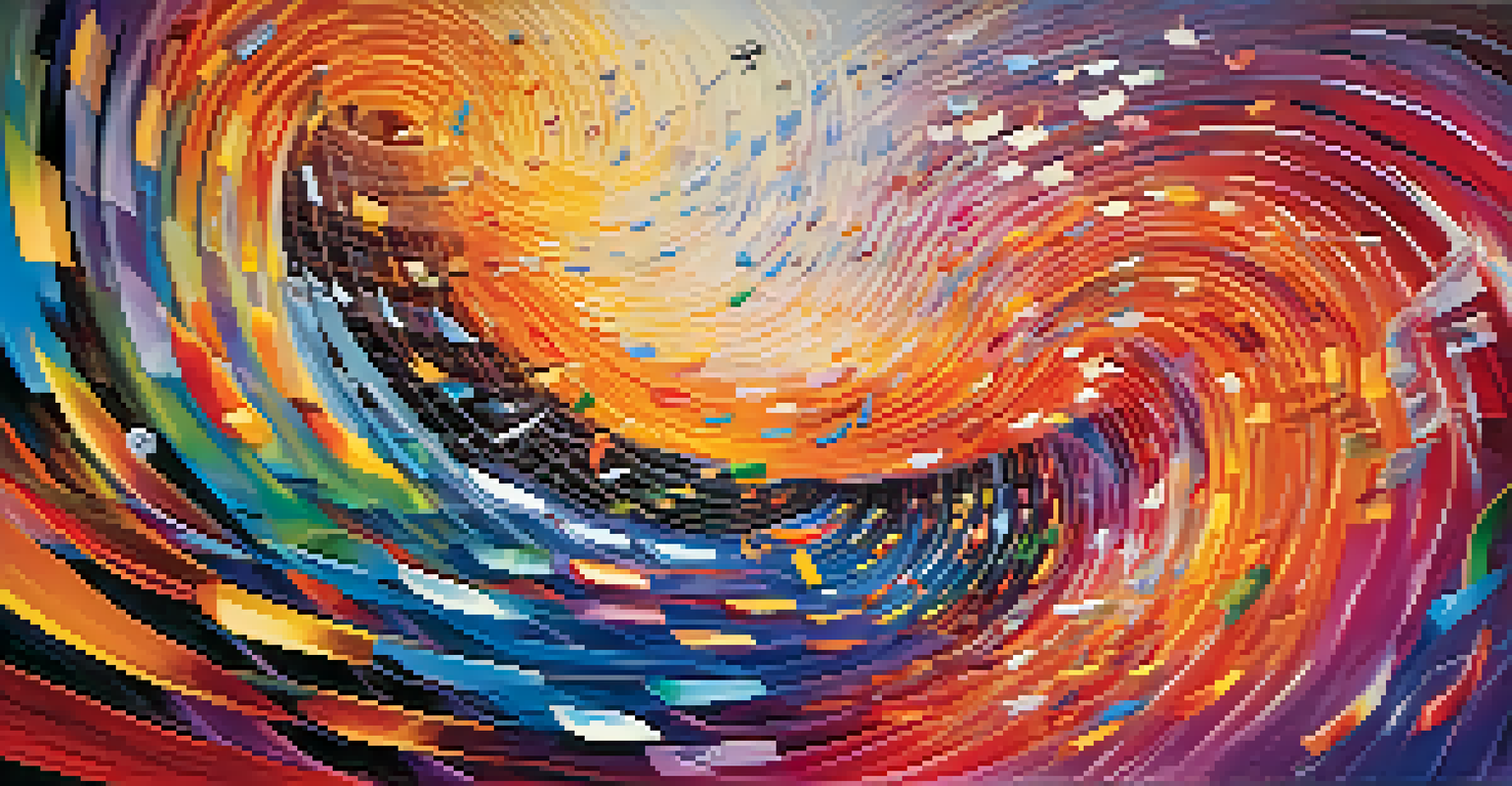How Hallucinogens Influence Sensory Perception and Reality

Understanding Hallucinogens: A Brief Overview
Hallucinogens are substances that significantly alter perception, mood, and cognitive processes. They can be natural, like psilocybin from mushrooms, or synthetic, like LSD. These substances have been used for centuries in various cultures for spiritual and therapeutic purposes, making them a fascinating topic of study.
The experience of altered states of consciousness can lead to profound insights about the nature of reality and the self.
When ingested, hallucinogens can lead to profound changes in the way individuals experience the world around them. This includes alterations in visual and auditory perception, which can feel as real as everyday experiences. The term 'psychedelic' is often used to describe these effects, meaning 'mind-manifesting'—and they truly can be transformative.
It's important to approach the topic of hallucinogens with an open mind, as they challenge our conventional understanding of reality. By delving into how they influence sensory perception, we can better appreciate the complexities of the human mind and the nature of our experiences.
The Science of Sensory Perception
Sensory perception refers to the process by which our brains interpret information from our senses—sight, sound, touch, taste, and smell. This intricate system allows us to navigate the world, forming our understanding of reality. However, hallucinogens can disrupt this process, leading to altered perceptions.

For instance, visual perception can be dramatically influenced by hallucinogens, causing users to see vivid colors, patterns, or even hallucinations that aren't present in the environment. This can result in a feeling of heightened awareness or a sense of connectedness to the universe, which many users describe as enlightening.
Hallucinogens Alter Perception
Hallucinogens significantly change sensory experiences, leading to altered visual and auditory perceptions that can feel profoundly real.
Similarly, auditory experiences can become distorted, with sounds being amplified or warped. This can create an overwhelming sense of immersion in one's surroundings, as if the world is alive and communicating. Such transformations highlight the complexities of our sensory systems and how susceptible they are to external influences.
The Role of Neurotransmitters
Neurotransmitters are chemical messengers in the brain that play a crucial role in regulating mood, cognition, and perception. Hallucinogens primarily affect serotonin receptors, particularly the 5-HT2A receptor, which is linked to mood enhancement and altered perception. By influencing these receptors, hallucinogens create changes in how we perceive reality.
Psychedelics can help us understand the world in ways that are often overlooked by our everyday consciousness.
When serotonin levels are altered, users may experience shifts in mood and sensory perception, leading to feelings of euphoria or anxiety. This can manifest as a heightened appreciation for music, art, or nature, where colors appear more vibrant, and sounds more profound. This connection between neurotransmitters and sensory experience illustrates the intricate relationship between our biology and our perceptions.
Understanding the role of neurotransmitters helps us grasp why hallucinogens can lead to such varied experiences. While some may find joy and enlightenment, others may encounter fear and confusion, showcasing the diverse effects these substances can have on individuals.
Altered Visual Experiences
One of the most striking effects of hallucinogens is the alteration of visual experiences. Users often report seeing geometric patterns, trails of light, or even entire scenes that seem to come alive. These phenomena can range from mild distortions to vivid hallucinations, creating a surreal visual landscape.
For example, someone under the influence of LSD might see everyday objects morphing into something otherworldly, like a chair appearing to breathe or a wall pulsating with energy. This heightened visual perception can feel incredibly real, often leading to a sense of awe and wonder about the world.
Neurotransmitters Influence Experience
The interaction of hallucinogens with neurotransmitters, particularly serotonin, affects mood and perception, resulting in diverse emotional experiences.
These altered visual experiences can also prompt introspection and creativity. Artists and musicians have long drawn inspiration from their hallucinogenic experiences, using them as a catalyst for creativity and expression. This intersection of perception and creativity highlights the profound impact that these substances can have on our cognitive processes.
Auditory Hallucinations and Sound Perception
In addition to visual changes, hallucinogens can significantly affect auditory perception. Users may hear sounds that aren't present, or existing sounds may be amplified and distorted. This can create a unique auditory experience that feels deeply immersive and sometimes overwhelming.
For instance, someone on a hallucinogen might perceive music not just as sound, but as a rich tapestry of emotions and colors. Each note could evoke a specific feeling or memory, transforming the listening experience into something transcendent. This phenomenon can lead to a deeper connection with art and music, as well as an appreciation for the nuances of sound.
These auditory changes also show how our brains interpret and process sound. The way hallucinogens alter auditory perception reinforces the idea that our experiences of reality are not fixed but are shaped by our minds and the substances we consume.
Emotional and Psychological Effects
Hallucinogens don't just alter sensory perception; they can also evoke strong emotional responses. Users often report experiencing heightened feelings of joy, love, or connection to others, but the emotional landscape can be complex. Some may also encounter feelings of anxiety or paranoia, depending on their mindset and environment.
This emotional variability is often referred to as 'set and setting,' which highlights the importance of a person's mindset and surroundings during the experience. A supportive and safe environment can enhance positive feelings, while a chaotic or negative space can lead to distressing experiences. This underscores the psychological aspect of hallucinogens and their potential impact on mental health.
Cultural Significance of Hallucinogens
Many cultures have historically utilized hallucinogens for spiritual and therapeutic purposes, highlighting their deep-rooted significance in human experience.
Many therapeutic approaches are now exploring the use of hallucinogens to address issues like PTSD, anxiety, and depression. The ability to facilitate profound emotional experiences can lead to breakthroughs in understanding oneself and processing trauma, suggesting that these substances may have valuable applications in mental health treatment.
Cultural and Historical Context
Hallucinogens have a rich history intertwined with various cultures around the globe. Indigenous peoples have used these substances for spiritual rituals, healing practices, and communal bonding for centuries. This cultural significance highlights the diverse ways hallucinogens influence human experience and perception.
For example, the use of peyote in Native American spirituality illustrates how these substances can facilitate profound spiritual experiences and connections to the divine. Similarly, ayahuasca ceremonies in South America serve as a means for healing and personal insight, showcasing the transformative potential of hallucinogens.

Understanding the cultural context of hallucinogens allows us to appreciate their role in shaping human consciousness. As society continues to explore these substances, it's essential to honor their historical significance and approach them with respect and knowledge.